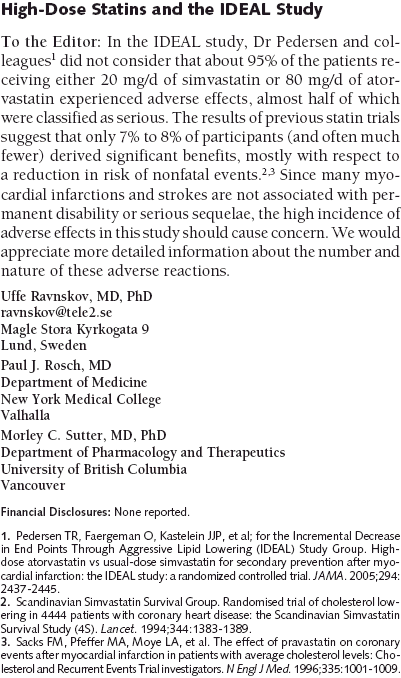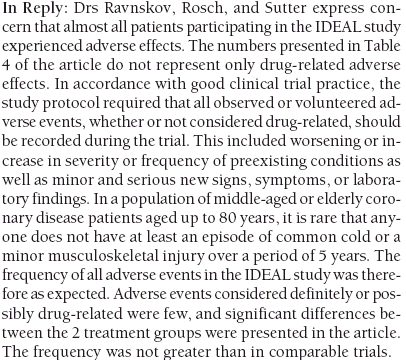|
This
is a contribution from members of THINCS, Letter to the editor of JAMA (2006;295:2476) as a comment to the IDEAL trial
Here is the answer from the authors: That the authors did not give us the requested information was of course dissatisfying. We therefore sent the following letter to the editor: In a previous letter1 we requested the IDEAL trial directors to list the number and specific nature of the serious adverse effects that were seen in almost half of their patients. Such a high percentage has not been reported in any previous trial and their reply2 that most of the adverse effects were not drug-related is not informative or responsive to our request. Since many significant adverse side effects from drugs are not detected until the post-marketing surveillance process, what criteria were used to classify adverse effects as not being drug related? As recently reported3 several unanticipated statin side effects have already surfaced. Given the fact that more than half the world's adult population could be on perpetual statin therapy based on the latest guidelines, it is imperative that all adverse effects be reported in detail. We would therefore again request that the authors make this information available so that others can make their own assessment as to whether they might be statin related.
Here is the editor's answer: June 13, 2006
|


